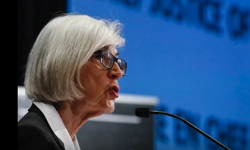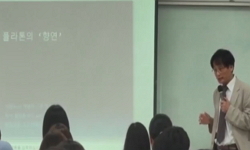우리나라는 성별영향분석평가, 성인지 예산 등 성 주류화 확산을 위한 도구들이 국가 주도적으로 활발하게 진행되고 있음에도 불구하고 아직까지 여성학적 논의는 거의 이루어지지 않고 있...
http://chineseinput.net/에서 pinyin(병음)방식으로 중국어를 변환할 수 있습니다.
변환된 중국어를 복사하여 사용하시면 됩니다.
- 中文 을 입력하시려면 zhongwen을 입력하시고 space를누르시면됩니다.
- 北京 을 입력하시려면 beijing을 입력하시고 space를 누르시면 됩니다.
https://www.riss.kr/link?id=A100490777
- 저자
- 발행기관
- 학술지명
- 권호사항
-
발행연도
2013
-
작성언어
Korean
- 주제어
-
KDC
337
-
자료형태
학술저널
-
수록면
63-88(26쪽)
- 제공처
- 소장기관
-
0
상세조회 -
0
다운로드
부가정보
국문 초록 (Abstract)
이 연구에서는 성별영향분석평가의 운영현황과 성과, 확대방안, 행정체계 내에서 성별영향분석평가가 이해되는 방식과 변화요구에 대해 살펴보았다. 또 컨설팅과 젠더 거버넌스를 통한 제도의 정교화를 통해 성별영향분석평가가 성인지적 정책도구, 성평등을 위한 방향성을 짚어보고자 한다.
우리나라는 성별영향분석평가, 성인지 예산 등 성 주류화 확산을 위한 도구들이 국가 주도적으로 활발하게 진행되고 있음에도 불구하고 아직까지 여성학적 논의는 거의 이루어지지 않고 있는 실정이다. 성별영향분석평가를 중심으로 살펴보고자 하는 것은 그 목적이 성평등 달성과 정책에 대한 성분석에 있으며, 법 제정 이후 제개정 법률과 계획, 사업으로 분석대상이 확대되어 정책 전반에 대한 젠더분석이 가능해졌기 때문이다.
이 연구에서는 성별영향분석평가의 운영현황과 성과, 확대방안, 행정체계 내에서 성별영향분석평가가 이해되는 방식과 변화요구에 대해 살펴보았다. 또 컨설팅과 젠더 거버넌스를 통한 제도의 정교화를 통해 성별영향분석평가가 성인지적 정책도구, 성평등을 위한 방향성을 짚어보고자 한다.
다국어 초록 (Multilingual Abstract)
Gender sensitive statistics was established through the revision of the basic law for the prosperity of women in 2002, and the gender responsive budget was prescribed in the 2006 Korean National Fiscal Act. September 2011, “Gender Impact Analysis Evaluation” was enacted. Gender impact assessment is expected to grow in quality.
To achieve the goal, this study first examines the way GIA a means to realize gender equality works from a feminist perspective and highlight both positive and negative aspects of it through the way it is understood and managed. Secondly, this study tries to confirm the policy network between the level of gender sensitivity of different actors such as government employees, gender experts, policy consultants, and NGO activists and policy making participants.
It has been studied through the research that GIA has effectively supported GIA's expansion and its settlement and expanded the range of government's gender sensitive policy. However, GIA has also caused unnecessary increase of the number of inappropriate projects as a result of excessive competitions among the central/local governments and their bureaus/departments. Besides, it has fostered the distortion of ideas regarding gender equality as a result of an excessive emphasis on statistical equality between the two genders. The lack of comprehensive understanding that lies at the bottom of GIA on the diversity among different women has eventually led to the result where women are understood and treated solely as a 'beneficiary' of gender sensitive policies.
At last this study suggest that any researches that study GIA from a feminist perspective should be continuously carried on and supported so that they could contribute to the development of GIA as a true means to gender mainstreaming.
The United Nations (UN) adopted gender mainstreaming as a new strategic paradigm for women policies and led each government to apply gender impact assessment and gender responsive budget in policy making at its 4th World Conference on Women in Beijing...
The United Nations (UN) adopted gender mainstreaming as a new strategic paradigm for women policies and led each government to apply gender impact assessment and gender responsive budget in policy making at its 4th World Conference on Women in Beijing(1995). The Republic of Korea has chosen gender mainstreaming as its key strategy for women policies since the late 1990s. Gender Impact Analysis, an essential tool of GM, has been implemented since 2005 in Korea with dramatic increase in quantity.
Gender sensitive statistics was established through the revision of the basic law for the prosperity of women in 2002, and the gender responsive budget was prescribed in the 2006 Korean National Fiscal Act. September 2011, “Gender Impact Analysis Evaluation” was enacted. Gender impact assessment is expected to grow in quality.
To achieve the goal, this study first examines the way GIA a means to realize gender equality works from a feminist perspective and highlight both positive and negative aspects of it through the way it is understood and managed. Secondly, this study tries to confirm the policy network between the level of gender sensitivity of different actors such as government employees, gender experts, policy consultants, and NGO activists and policy making participants.
It has been studied through the research that GIA has effectively supported GIA's expansion and its settlement and expanded the range of government's gender sensitive policy. However, GIA has also caused unnecessary increase of the number of inappropriate projects as a result of excessive competitions among the central/local governments and their bureaus/departments. Besides, it has fostered the distortion of ideas regarding gender equality as a result of an excessive emphasis on statistical equality between the two genders. The lack of comprehensive understanding that lies at the bottom of GIA on the diversity among different women has eventually led to the result where women are understood and treated solely as a 'beneficiary' of gender sensitive policies.
At last this study suggest that any researches that study GIA from a feminist perspective should be continuously carried on and supported so that they could contribute to the development of GIA as a true means to gender mainstreaming.
동일학술지(권/호) 다른 논문
-
- 동덕여자대학교 한국여성연구소
- 이해진
- 2013
-
- 동덕여자대학교 한국여성연구소
- 김연주
- 2013
-
- 동덕여자대학교 한국여성연구소
- 박옥주
- 2013




 RISS
RISS





